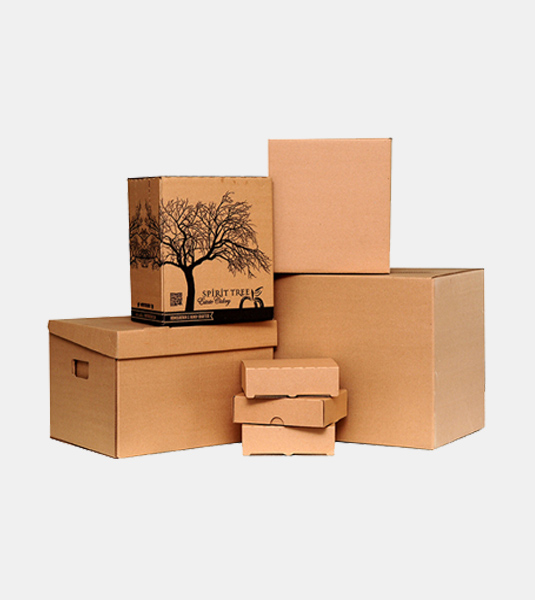In today’s competitive marketplace, businesses recognize the importance of packaging not only as a means of product protection but also as a powerful tool for branding and customer engagement. Corrugated packaging, with its versatility and sustainability, offers an ideal solution for meeting diverse customer needs. This article explores the significance of custom packaging solutions in the corrugated industry and how manufacturers tailor their offerings to address the unique requirements of clients across various sectors.
Understanding Custom Corrugated Packaging:
Custom corrugated packaging involves the design and production of boxes, cartons, and containers that are specifically tailored to the dimensions, specifications, and branding preferences of individual customers. Unlike standardized packaging solutions, custom corrugated packaging offers flexibility in design, printing, and construction, allowing businesses to create unique packaging solutions that resonate with their target audience.
Importance of Tailored Solutions:
Custom corrugated packaging plays a crucial role in enhancing brand visibility, protecting products during transit, and creating memorable unboxing experiences for customers. By collaborating with corrugated packaging manufacturers, businesses can leverage their expertise to develop packaging solutions that align with their brand identity, product requirements, and marketing objectives. Whether it’s designing eye-catching graphics, incorporating eco-friendly materials, or optimizing packaging dimensions for space efficiency, custom solutions enable businesses to differentiate themselves in the marketplace and foster brand loyalty among consumers.
Key Components of Custom Corrugated Packaging:
Design Collaboration:
- The process of creating custom corrugated packaging begins with a collaborative design phase, where packaging experts work closely with clients to understand their vision, brand guidelines, and packaging objectives. Designers utilize CAD (Computer-Aided Design) software to develop 3D prototypes and mock-ups, allowing clients to visualize the final product and provide feedback on design elements such as shape, size, color, and graphics. Through iterative design iterations, clients have the opportunity to fine-tune their packaging concepts and ensure that the end result meets their expectations.
Material Selection:
- Custom corrugated packaging offers a wide range of material options to suit different product types, shipping requirements, and sustainability goals. Corrugated board comes in various flute profiles (e.g., single-wall, double-wall, triple-wall) and liner combinations, allowing manufacturers to customize packaging strength, cushioning, and protection levels according to customer specifications. Additionally, businesses can choose from recycled, virgin, or specialty papers to align with their environmental values and branding preferences. Material selection also considers factors such as printability, durability, and cost-effectiveness to optimize packaging performance and value.
Printing and Branding:
- Printing capabilities play a crucial role in custom corrugated packaging, enabling businesses to showcase their brand identity and product messaging effectively. Corrugated packaging manufacturers utilize advanced printing technologies, such as flexography, lithography, and digital printing, to achieve vibrant colors, high-resolution graphics, and intricate designs on corrugated substrates. Whether it’s full-color graphics, custom logos, or product information, printing processes can be tailored to meet the specific branding and marketing requirements of each client. Additionally, specialty finishes such as matte or gloss coatings, varnishes, and embossing add tactile and visual appeal to custom packaging, enhancing the overall unboxing experience for consumers.
Structural Engineering:
- Custom corrugated packaging solutions are designed not only to look visually appealing but also to provide optimal protection and functionality for packaged products. Structural engineering considerations include box dimensions, stacking strength, load-bearing capacity, and closure mechanisms to ensure that packaging withstands the rigors of transportation and handling. Packaging engineers employ advanced software tools and simulation techniques to analyze stress points, perform drop tests, and validate packaging performance under real-world conditions. By optimizing structural design parameters, businesses can minimize packaging waste, reduce shipping costs, and enhance product safety during transit.
Sustainability and Environmental Impact:
- In response to growing consumer demand for eco-friendly packaging solutions, custom corrugated packaging manufacturers prioritize sustainability and environmental stewardship in their product offerings. Utilizing recycled and recyclable materials, minimizing packaging waste, and adopting eco-friendly printing practices are key strategies for reducing the environmental footprint of custom packaging solutions. Manufacturers also collaborate with clients to explore alternative packaging formats, lightweighting options, and renewable materials that align with their sustainability goals and contribute to a circular economy. By integrating sustainability principles into custom packaging design and production, businesses can enhance their brand reputation, attract environmentally conscious consumers, and contribute to a greener future.
Custom corrugated packaging solutions empower businesses to differentiate themselves in the marketplace, enhance brand recognition, and meet the diverse needs of their customers. By leveraging collaborative design processes, advanced printing technologies, material innovations, structural engineering expertise, and sustainability initiatives, corrugated packaging manufacturers deliver tailored solutions that resonate with clients across various industries. As businesses continue to prioritize packaging as a strategic asset for brand differentiation and customer engagement, custom corrugated packaging remains a versatile and sustainable choice for meeting evolving market demands and driving business success.







